Automobiles Technology- HONDA VTEC TURBO
Automobiles Technology – VTEC TURBO – The New Era Turbo Engine

A turbo engine with both exceptional fuel economy and high performance
The norm for turbo engines used to be “high power, low fuel economy.” Honda’ s VTEC TURBO is a new era engine that is both fuel efficient, and provides an enjoyable ride.
The 1.5L VTEC TURBO retains all the fuel economy benefits of a small engine, and by combining its turbo charger with a direct injection system and variable valve timing mechanism, produces a feel of power that is smooth from low revs, exceeding the torque of a 2.4L engine, to the high end. Acceleration is exhilarating on any road, from urban driving to highways, and uphill climbs.
In addition, the 1.5L VTEC TURBO is designed to perform well even on regular gasoline, so even more customers can enjoy its benefits.
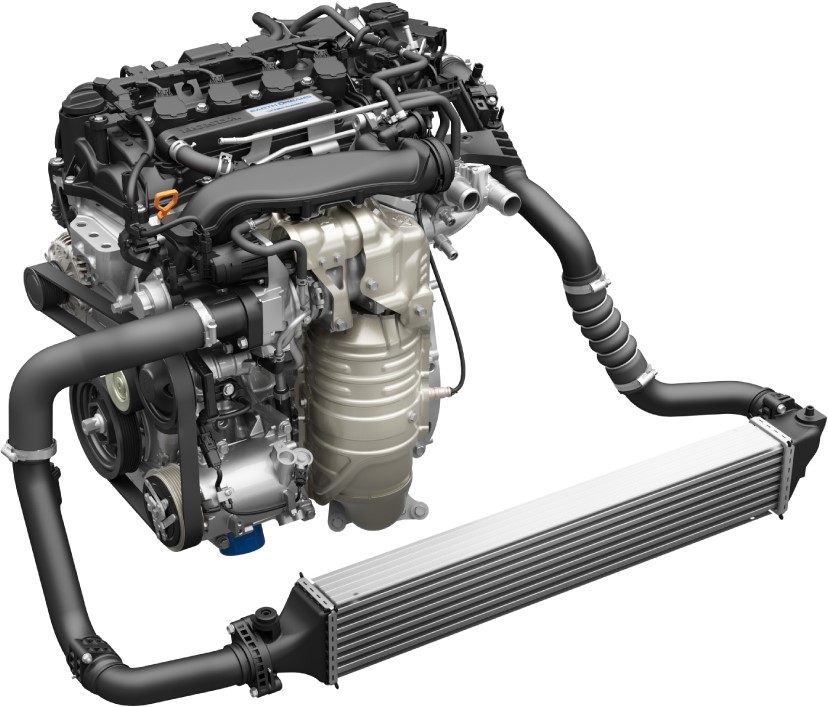
1.5L VTEC TURBO Engine
VTEC TURBO’s Three Vital Technologies
Small displacement engines are fuel efficient and light, but compared to a large engine, do not have a much power or torque. Supercharging using a turbo charger overcomes the power problem.
Honda’ s VTEC TURBO realizes high fuel economy and exhilarating power through three vital technologies: Dual VTC for Intake and Exhaust, Direct Injection System and High Tumble Intake Port, and Highly-responsive Turbocharger with Electronic Wastegate.
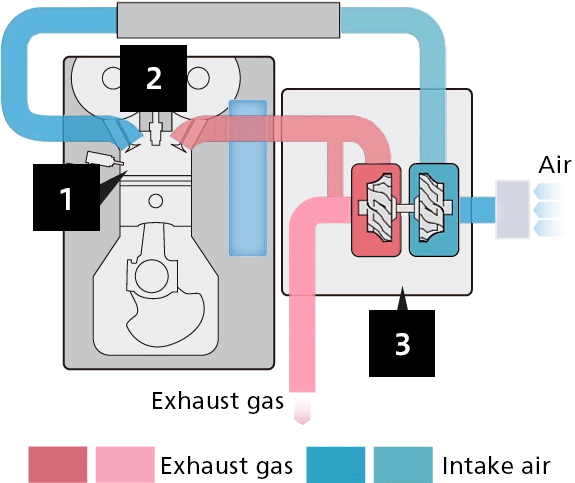
VTEC TURBO components
1. Direct Injection System and High Tumble Intake Port

The turbo engine’ s disadvantage was that by sending high-pressure air into the engine, its temperature and pressure would rise, resulting in knocking. The VTEC TURBO uses direct injection technology to inject fuel directly into the cylinders, lowering the temperature within the cylinders by the gasoline’ s vaporization heat. High tumble intake ports that strengthen intake airflow, and tumble flow maintaining pistons, allow fuel to be quickly and efficiently burned. By the cooling effect of direct injection and rapid combustion by high tumble flow, knocking is solved.
Within the combustion chamber

Fuel injection – Burning behavior
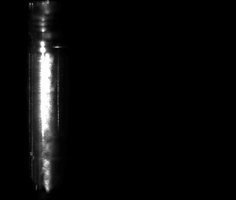
Fuel injection behavior
2. Dual VTC for Intake and Exhaust

Conventional turbo engines could not supercharge efficiently at low revs, causing slow engine response. With the VTEC TURBO, Valve Timing Control (VTC) changes the timing for intake and exhaust valves to operate, controlling the amount of time both types of valves are simultaneously open. This allows efficient supercharging even at low engine revs.
3. Turbocharger with Electronic Wastegate

Conventional turbo engines suffered from “turbo lag.” Acceleration lags behind depressing the accelerator, as exhaust energy has to rise to spin the turbines, which then increase intake amount. With the VTEC TURBO, this problem is avoided by using a turbocharger with electronic wastegates equipped with small-diameter turbines that spin efficiently on small exhaust energy. The result is a sharp, responsive turbo engine, which rapidly responds to how the accelerator pedal is depressed.

Other Technologies
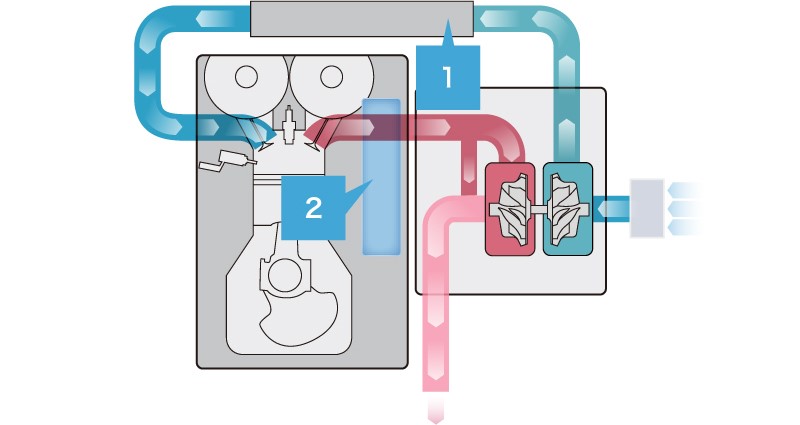
1. Intercooler
The Intercooler is a device that reduces the temperature of intake air compressed and heated by the turbocharger, before it is sent to the engine. Without the high-temperature air being cooled first, the temperature within the engine would rise, causing knocking. The intercooler also sends more air to the engine by cooling intake air to reduce its density (as heated air expands and reduces air density and increases volume) allowing the engine to operate even more efficiently.

2. Water-cooled exhaust manifold built into cylinder-head
Turbochargers use high-temperature exhaust gas from the engine’ s combustion chamber to send air into the engine. As turbocharged engines have high torque, the exhaust gas from the combustion chamber can exceed 1,000°C. Water jackets within the cylinder heads reduce exhaust gas temperature to an optimal level, before it enters the turbocharger. Durability of the components, which means the turbocharger’ s reliability, is increased.
Water jackets also allow for cooling in addition to fuel cooling, helping to increase fuel efficiency.
Related Topic: 2.0L VTEC TURBO
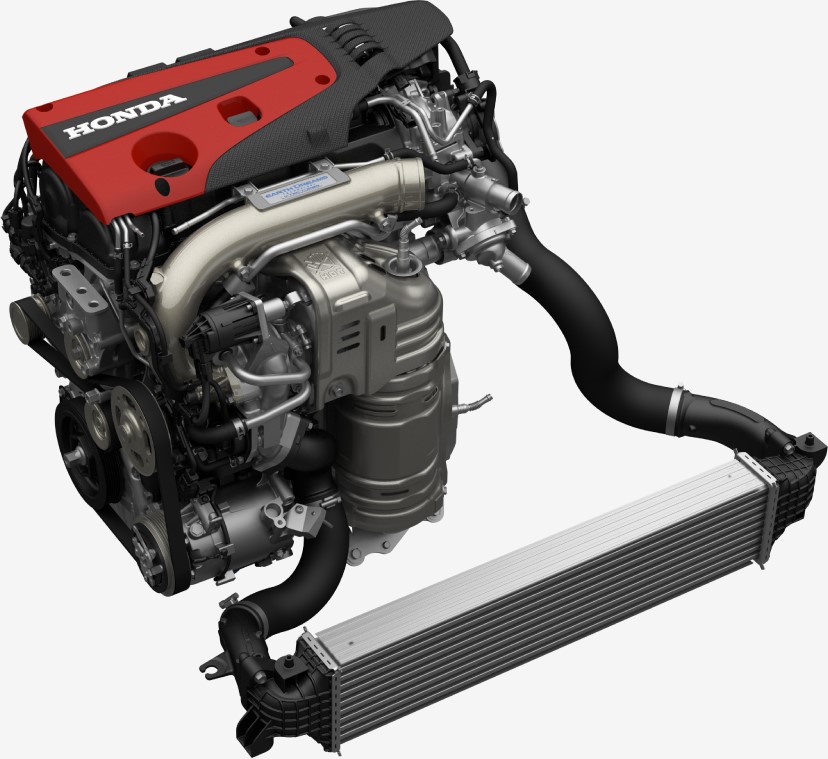
Contrasting the 1.5L VTEC TURBO which is fuel efficient and fun, the 2.0L VTEC TURBO focuses on power. Inheriting the basic design of the 1.5L version, the 2.0L VTEC TURBO is equipped with a variable lift mechanism and enhanced cooling performance, realizing higher output. The result is an engine with the fuel economy of a 2.0L straight 4-cylinder engine, and 320PS power, equivalent to a large 6-cylinder engine. The Civic Type R takes full advantage of the high performance and light weight of this engine, setting a new front-wheel drive lap record*1 of 7 minutes 43.80 seconds*2 at the Nürburgring Nordschleife. The 2.0L VTEC TURBO engine is considerate of environmental performance demanded in these times, yet pursues an even more enjoyable driving experience.
*1 Honda research as of April 2017
*2 Honda measurement

Variable lift mechanism

Enhanced cooling performance through measures such as cooling channel-equipped pistons
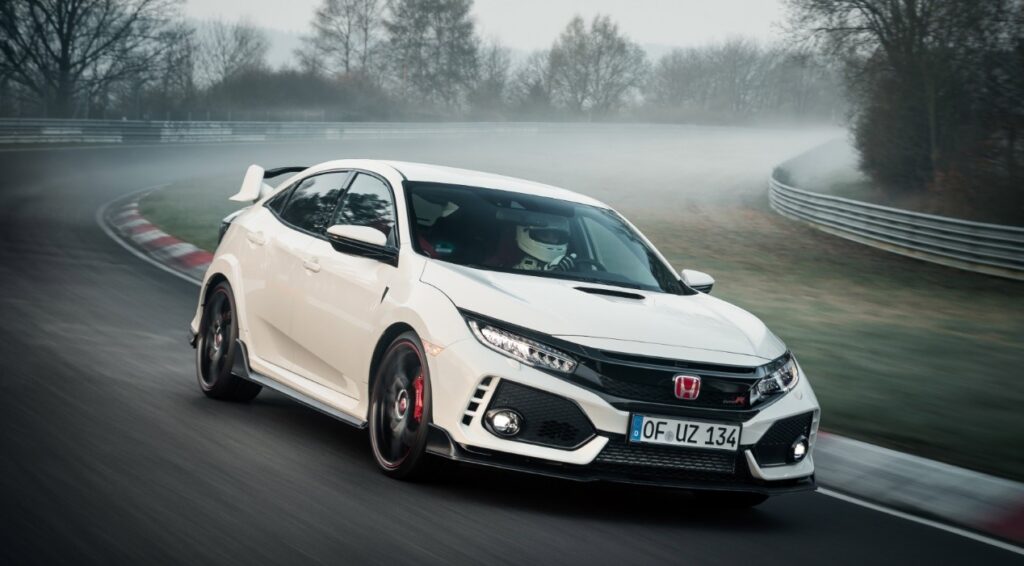
Civic Type R sets fastest front-wheel drive lap at the Nürburgring* (Honda research as of April 2017)
VTEC TURBO Fuel Efficient Under Any Condition
The VTEC TURBO engine is fuel efficient under any condition: from city driving with frequent stopping and starting, to highway driving. For city driving, a 2.4L naturally-aspirated engine produces high torque because of its displacement. The VTEC TURBO engine produces more torque than the 2.4L naturally-aspirated engine, thanks to its turbo. The VTEC TURBO allows a small, 1.5L engine to perform as well as a 2.4L engine.

Summary
Honda’ s VTEC TURBO is a technology that efficiently uses every last drop of gasoline, through a combination of turbo charger, direct injection system, and variable valve timing mechanism.
Through VTEC TURBO and hybrid systems, Honda strives to combine driving pleasure with environmental performance.
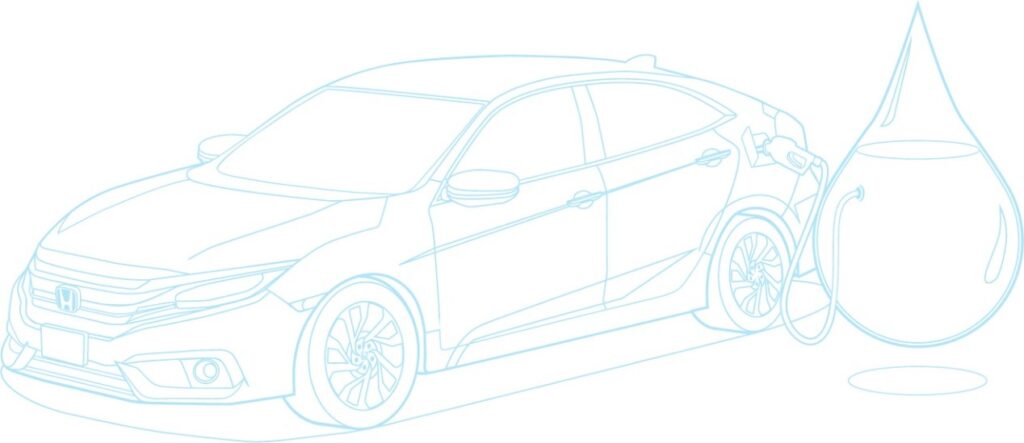
By https://global.honda/innovation/technology/automobile/Vtec-turbo-picturebook.html
